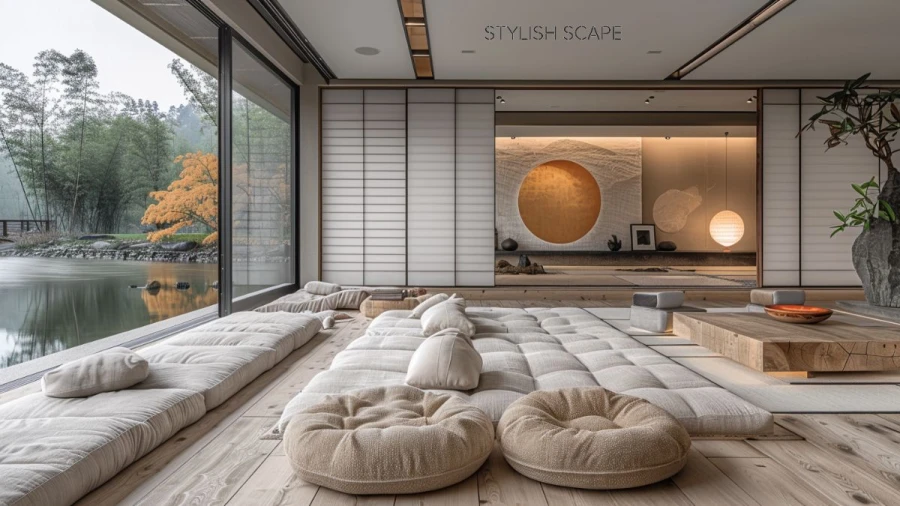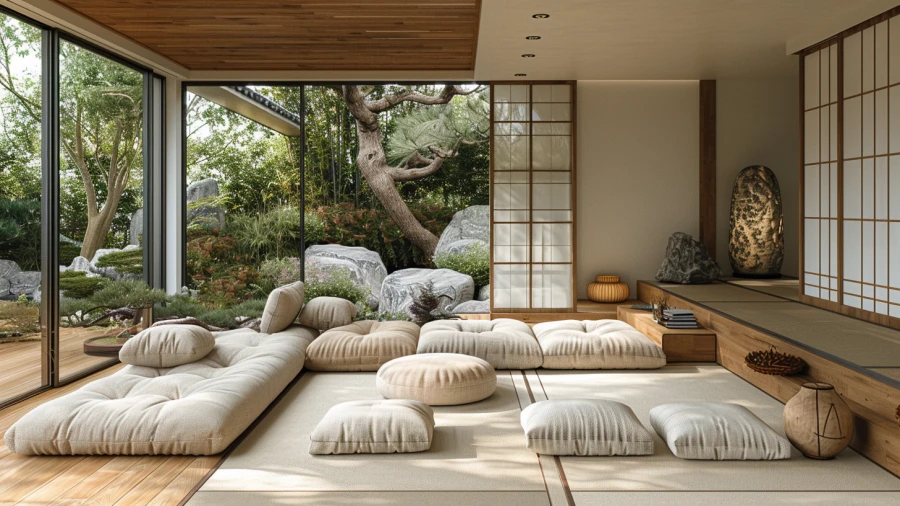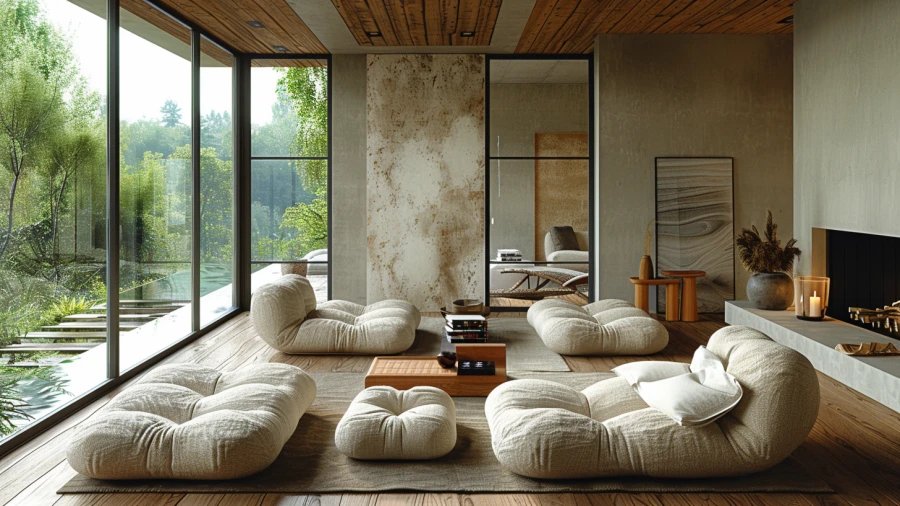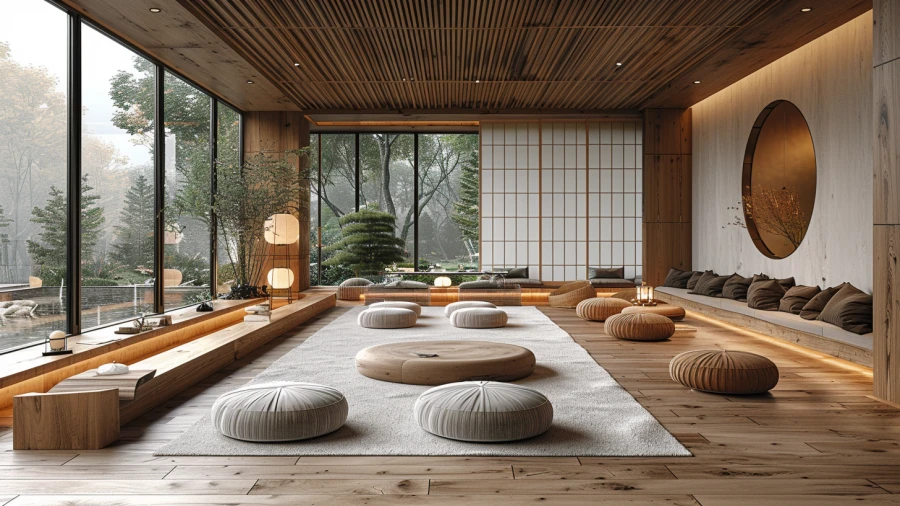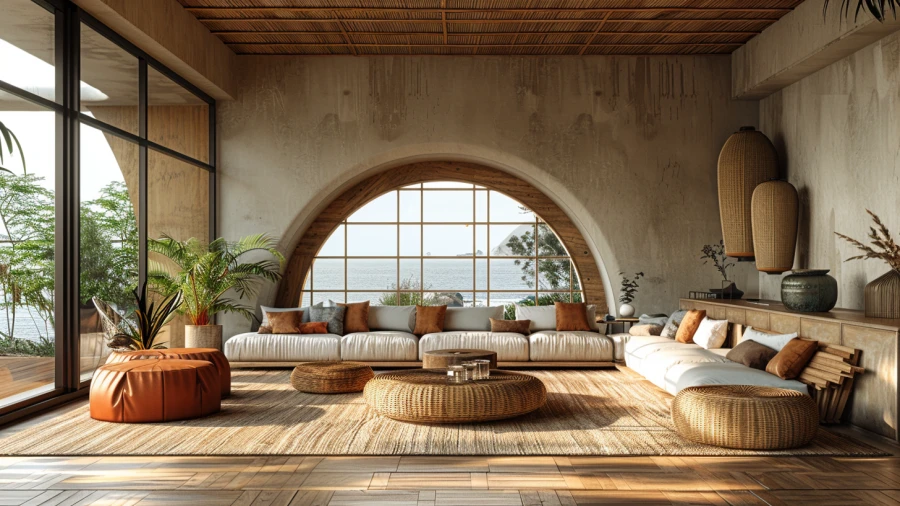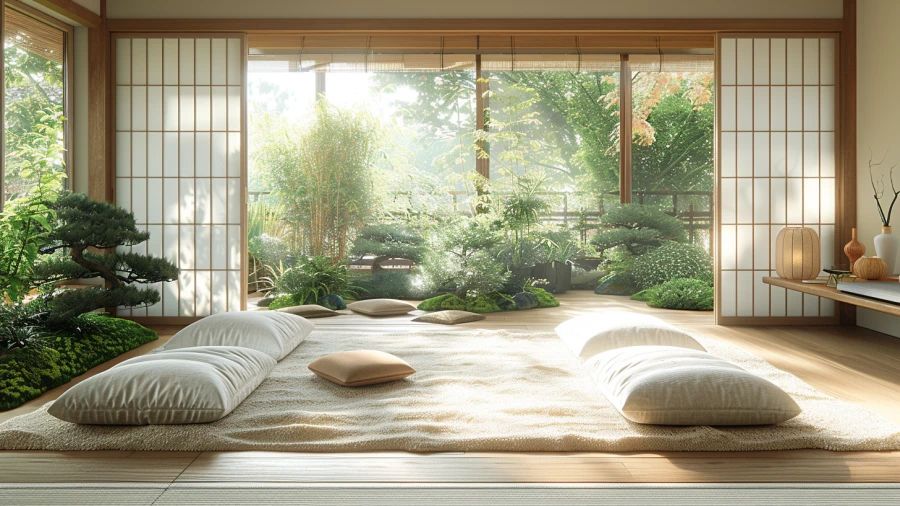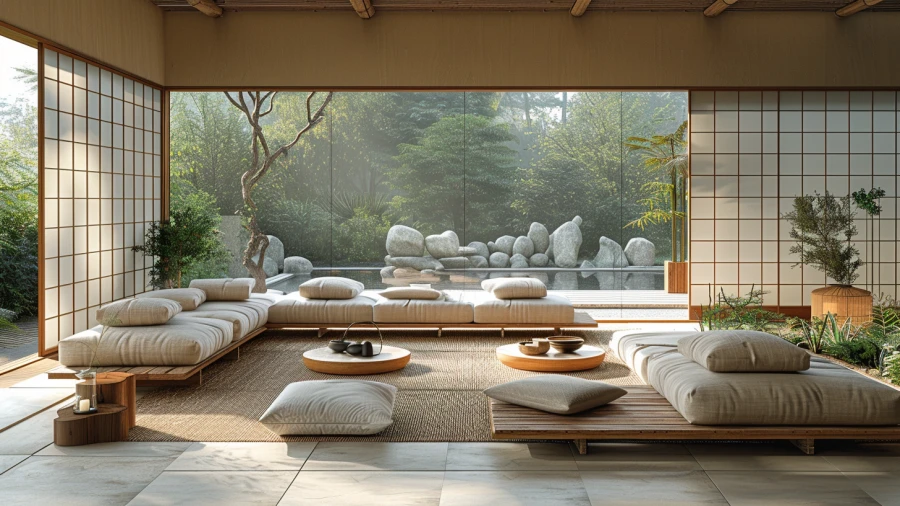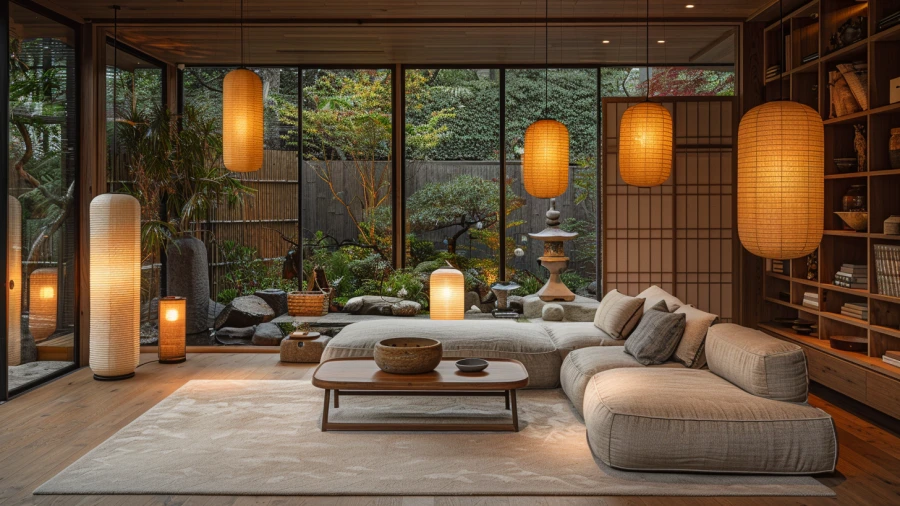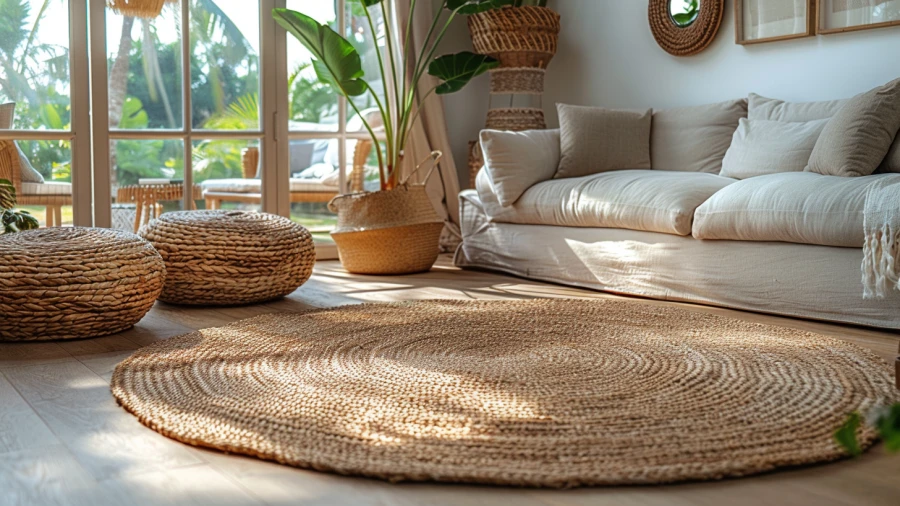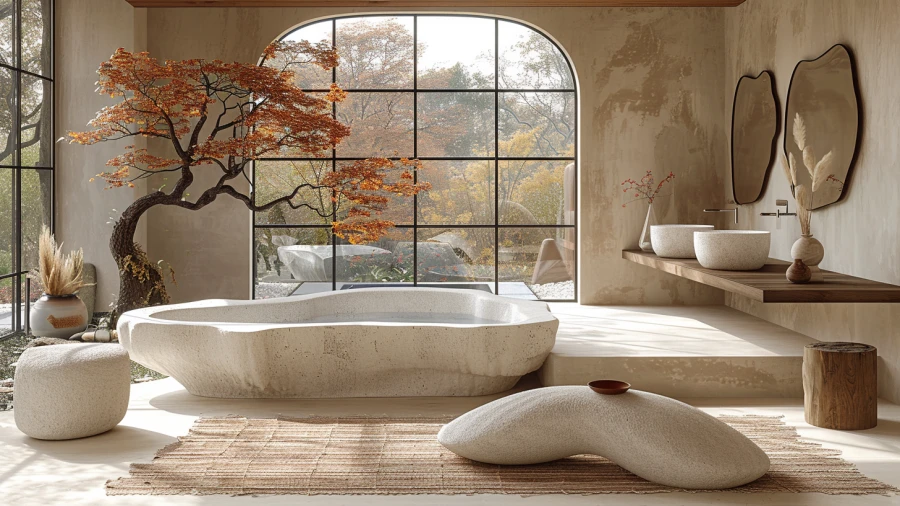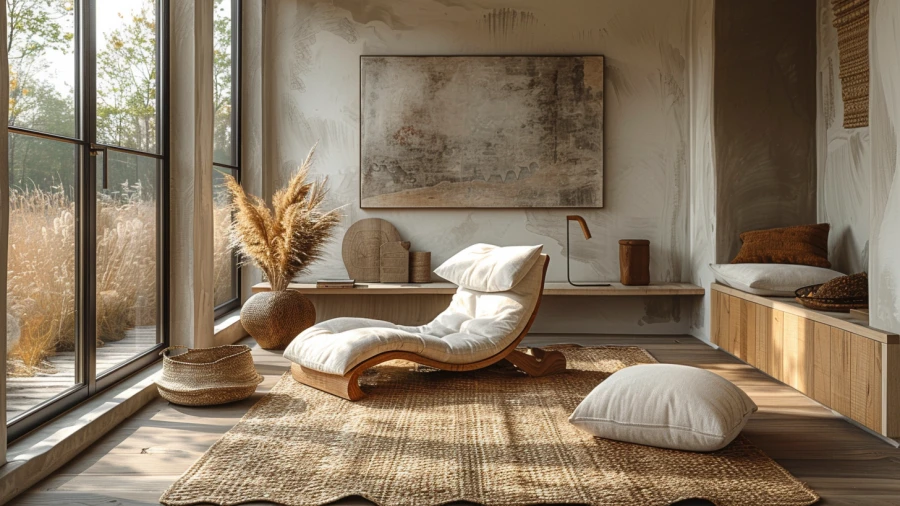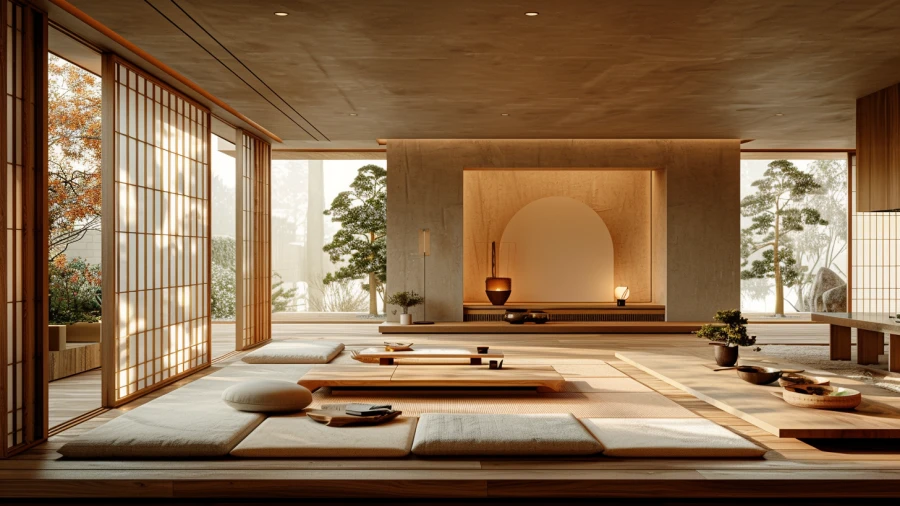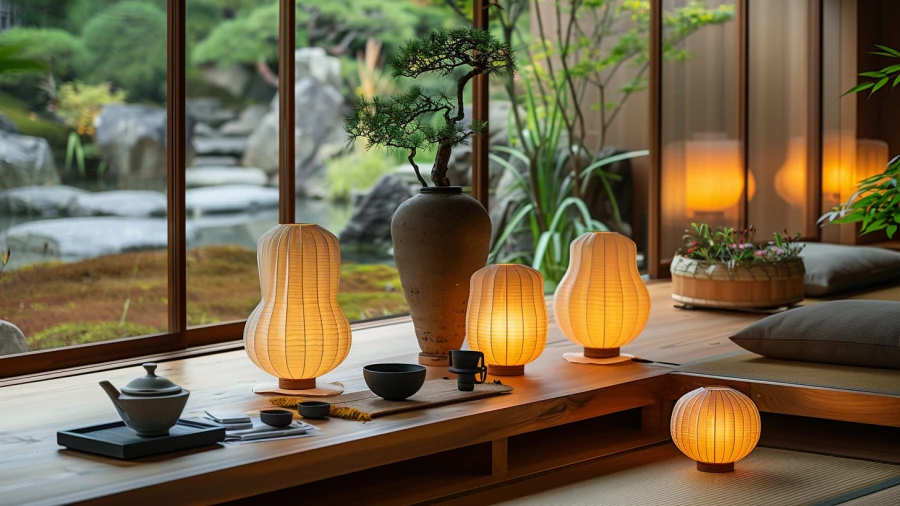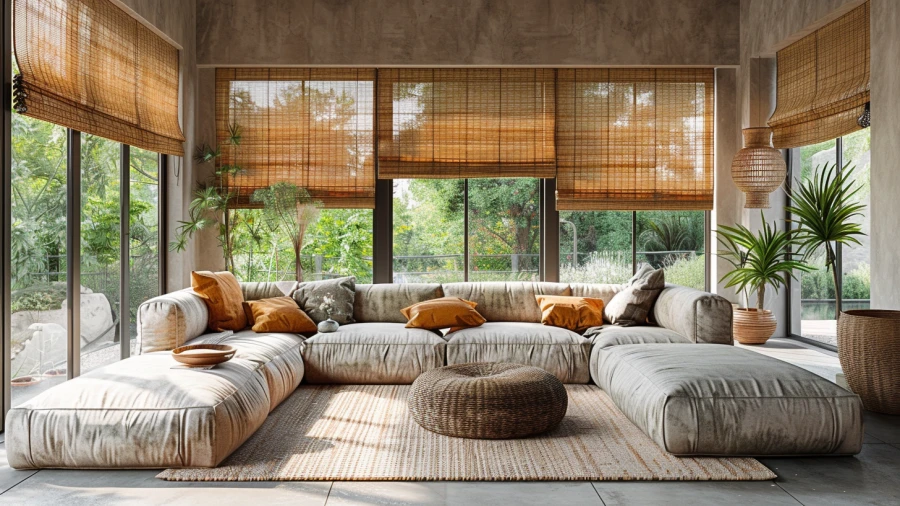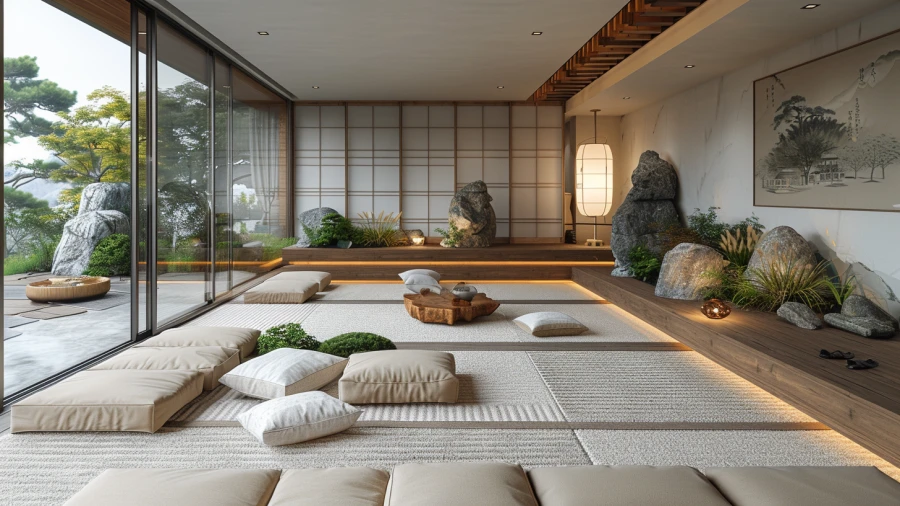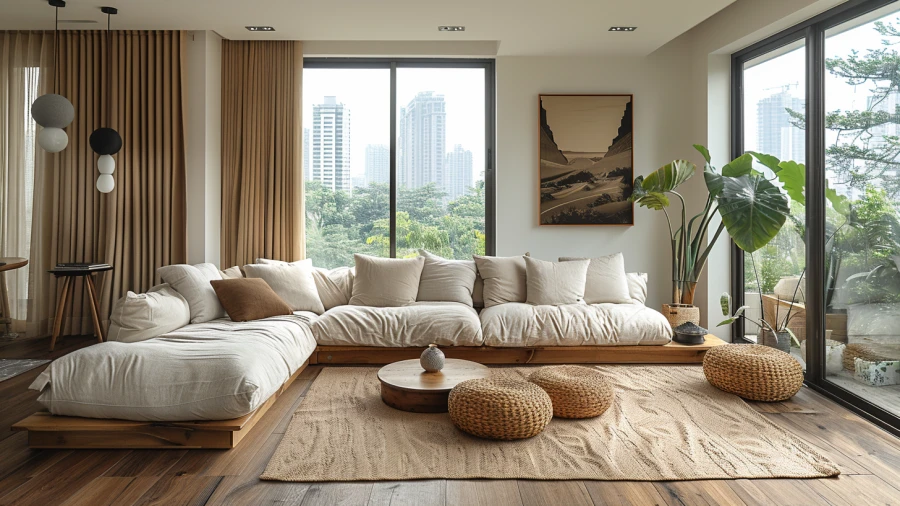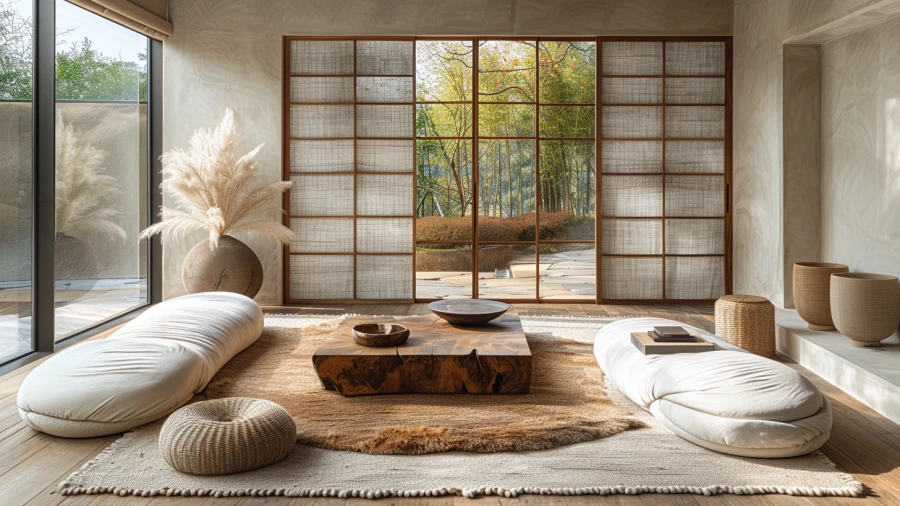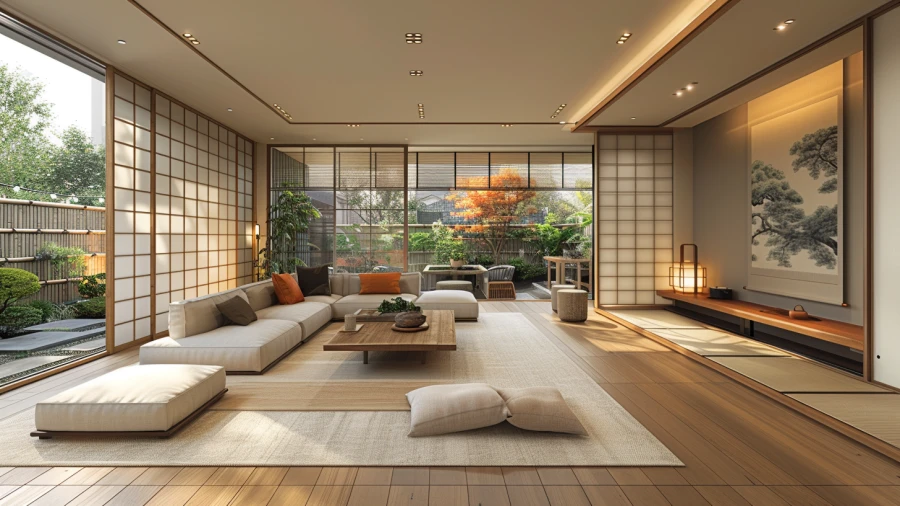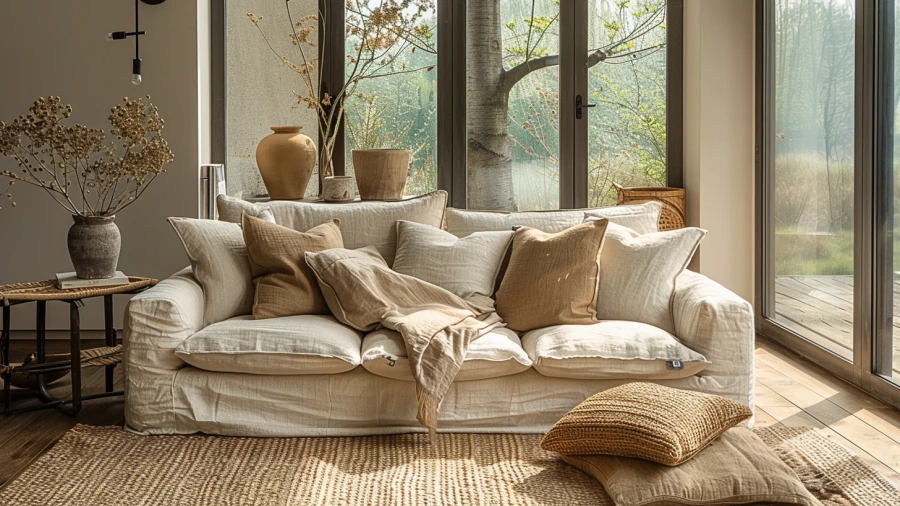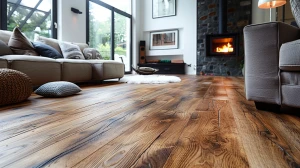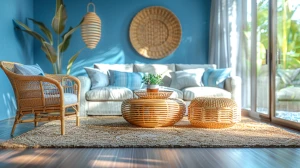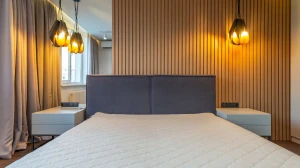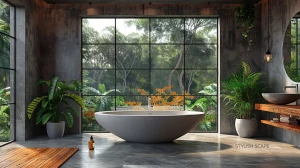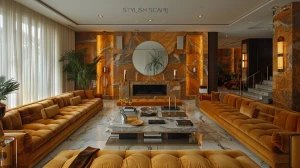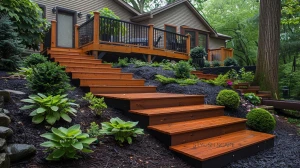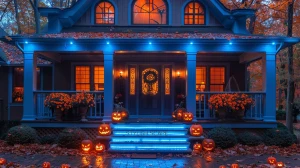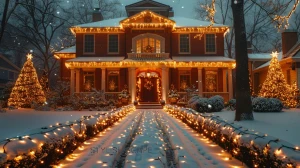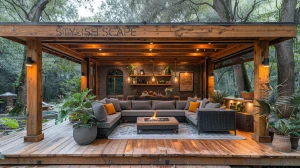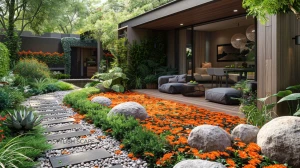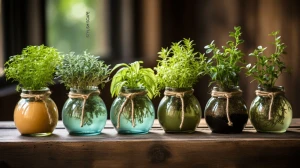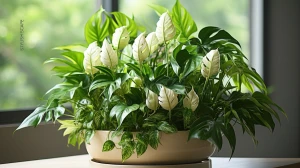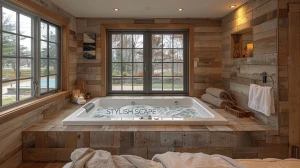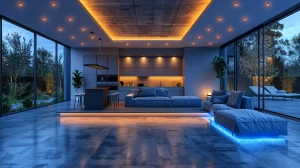
20 Japandi Interior Design Ideas Blending Minimalism with Warmth
Japandi Interior Design Ideas blend minimalist elegance with natural warmth. Learn how to incorporate neutral colors, wooden details, eco-friendly materials, and more to create a serene and stylish space.
by Priyanka P
Updated Sep 16, 2024
On This Page
- Japandi Interior Design
- Japandi Interior Elegance
- Neutral Color Scheme
- Japandi Wooden Details
- Eco-Friendly Materials
- Japandi Indoor Greenery
- Low-Profile Furniture
- Japandi Layered Lighting
- Textured Rugs
- Japandi Organic Forms
- Wabi-Sabi Elements
- Japandi Subtle Art
- Wooden Slat Features
- Japandi Rice Paper Lighting
- Natural Window Treatments
- Japandi Clutter-Free Spaces
- Classic Furniture
- Japandi Depth and Contrast
- Open Layout
- Japandi Mixed Textures
- Muted Color Accents
- What Types of Furniture Work Best in Japandi Interior Design?
Japandi Interior Design
Japandi Interior Design combines Japanese minimalism with Scandinavian warmth to create a peaceful and stylish space. This style emphasizes simplicity, clean lines, and functionality while maintaining a cozy and inviting atmosphere. Key elements include neutral colors like whites, creams, and soft grays, and the use of natural materials such as wood and linen.
Japandi interiors often feature low-profile furniture, which contributes to an open and uncluttered look. Adding natural elements, such as plants and wooden accents, helps bring a touch of nature indoors. The design also focuses on quality over quantity, favoring timeless pieces that enhance the room’s serenity. Overall, Japandi Interior Design achieves a calm, balanced environment that is both beautiful and practical.
Japandi Interior Elegance
Japandi Interior Elegance is characterized by the seamless blend of Japanese minimalism and Scandinavian warmth. This style emphasizes clean lines, simple forms, and a sense of understated luxury. Japandi interiors often feature furniture and decor that are both functional and aesthetically pleasing, avoiding unnecessary embellishments. The use of natural materials, such as wood and stone, combined with neutral color palettes, creates a serene and sophisticated atmosphere. Elegant touches like low-profile furniture, subtle textures, and a focus on quality over quantity contribute to the refined charm of Japandi spaces. This approach results in a tranquil environment where each element serves a purpose, reflecting the core principles of simplicity and beauty in Japandi design.
Neutral Color Scheme
A neutral color scheme is a cornerstone of Japandi design, creating a calming and harmonious environment. This palette typically includes shades of white, beige, gray, and soft taupe, which work together to establish a serene backdrop. By using neutral tones, Japandi interiors achieve a sense of tranquility and balance, allowing other design elements to stand out without overwhelming the space. These colors also enhance the natural light in a room, making it feel more spacious and airy. To add depth and interest, subtle variations in texture and material are introduced, but the overall effect remains soothing and cohesive. The neutral color scheme is key to achieving the minimalist yet warm aesthetic characteristic of Japandi interiors.
Japandi Wooden Details
Japandi Wooden Details play a crucial role in defining the warmth and natural elegance of Japandi interiors. Wood, used extensively in both furniture and decor, contributes to a cozy and inviting atmosphere while aligning with the style's focus on natural materials. In Japandi design, wooden elements range from light oak to deep walnut, creating a rich texture and visual interest. Features like wooden flooring, slatted walls, and minimalistic wooden furniture pieces add a layer of sophistication and grounding. The integration of wood not only enhances the aesthetic but also brings a touch of nature indoors, reflecting the harmony between Japanese and Scandinavian design philosophies.
Eco-Friendly Materials
Eco-friendly materials are a fundamental aspect of Japandi design, reflecting the style's commitment to sustainability and environmental responsibility. Materials such as bamboo, rattan, jute, and recycled fabrics are commonly used to create a space that is both beautiful and mindful of its ecological impact. Japandi interiors often feature natural, biodegradable materials that reduce waste and promote a healthier living environment. The use of these materials not only supports sustainable practices but also enhances the overall aesthetic with their organic textures and tones. By incorporating eco-friendly materials, Japandi's design merges style with conscience, creating spaces that are both elegant and environmentally aware.
Japandi Indoor Greenery
Japandi Indoor Greenery is an essential element in creating a harmonious and refreshing living space. Integrating plants into Japandi interiors enhances the connection with nature, which is a key principle in both Japanese and Scandinavian design. Indoor greenery, from lush houseplants to delicate succulents, adds a touch of vitality and softness to the minimalist environment. The choice of plants often reflects a preference for low-maintenance varieties that thrive indoors while complementing the neutral color scheme. By incorporating greenery, Japandi interiors not only improve air quality but also introduce a natural element that balances the clean lines and simplicity of the design, making the space feel more vibrant and alive.
Low-Profile Furniture
Low-Profile Furniture is a defining feature of Japandi design, reflecting its emphasis on simplicity and a connection to nature. This style incorporates furniture that sits close to the ground, such as low sofas, platform beds, and low tables. This design choice creates a sense of openness and spaciousness, aligning with the Japandi principles of minimalism and functionality. Low-profile furniture also fosters a relaxed and inviting atmosphere, encouraging a laid-back and grounded feeling. The sleek, unobtrusive lines of this furniture enhance the overall aesthetic, blending seamlessly with the neutral color palette and natural materials typical of Japandi interiors. This approach ensures that the furniture complements rather than dominates the space, supporting the tranquil and understated elegance of the design.
Japandi Layered Lighting
Japandi Layered Lighting is crucial for creating a warm, inviting ambiance in Japandi interiors. This approach combines various light sources to achieve a balanced and flexible illumination scheme. Typically, Japandi spaces feature a mix of overhead lights, floor lamps, table lamps, and sconces, each contributing to the overall lighting design. The goal is to create a layered effect that enhances both functionality and aesthetics. Soft, diffused lighting is often used to provide a gentle glow, while task lighting ensures practicality for specific activities. This multi-layered approach allows for adjustable lighting that can adapt to different moods and needs, enhancing the calm and harmonious atmosphere characteristic of Japandi design.
Textured Rugs
Textured Rugs are a key element in Japandi interiors, adding warmth and tactile interest to the minimalist space. These rugs often feature natural fibers like wool, jute, or cotton, which contribute to the overall comfort and coziness of the room. The texture of the rug creates a contrast with the smooth surfaces of wooden floors and furniture, adding depth and visual interest. In Japandi design, rugs are typically kept simple in pattern and color, often in neutral tones that complement the overall aesthetic. The focus is on subtle texture and quality, enhancing the serene and inviting atmosphere while maintaining the style's emphasis on simplicity and functionality.
Japandi Organic Forms
Japandi Organic Forms bring a natural, flowing element to Japandi interiors, balancing the clean lines and minimalist approach with softer, more fluid shapes. Organic forms can be seen in furniture, decor, and artwork, often featuring curves and asymmetrical designs that mimic the natural world. This contrast adds visual interest and warmth to the otherwise streamlined Japandi aesthetic. Organic shapes in items like rounded vases, curved chairs, and abstract sculptures provide a gentle counterpoint to the straight lines and geometric patterns typical of Japandi design. By incorporating these natural forms, Japandi interiors achieve a harmonious blend of simplicity and organic beauty.
Wabi-Sabi Elements
Wabi-Sabi Elements are integral to Japandi design, reflecting the Japanese philosophy of finding beauty in imperfection and impermanence. This concept is expressed through the use of rustic, handmade items, and materials that showcase natural flaws and unique characteristics. In Japandi interiors, wabi-sabi is evident in the raw textures of wood, the irregularities of handcrafted pottery, and the patina of aged surfaces. This approach adds a sense of authenticity and depth to the minimalist space, celebrating the beauty of the natural and the imperfect. Incorporating wabi-sabi elements into Japandi design enhances the overall tranquility and character of the space, aligning with the style's emphasis on simplicity and introspection.
Japandi Subtle Art
Japandi Subtle Art enhances the minimalist elegance of Japandi interiors through carefully curated artwork that complements the overall design without overwhelming it. This art typically features simple, abstract, or nature-inspired themes, often in muted or neutral tones that blend seamlessly with the room’s color palette. The focus is on quality and intentionality, with each piece chosen to contribute to the serene and harmonious atmosphere. Japandi interiors may feature a single large artwork or a few smaller pieces arranged thoughtfully, emphasizing the ‘less is more’ philosophy. This subtle approach to art ensures that it enhances the space’s calm and sophisticated aesthetic without disrupting the balance and simplicity of the design.
Wooden Slat Features
Wooden Slat Features are a popular design element in Japandi interiors, adding both functionality and aesthetic appeal. These features can be used as wall treatments, room dividers, or decorative accents, introducing a natural texture that complements the minimalist design. Wooden slats enhance the warmth and depth of the space while allowing light to filter through, creating a sense of openness and flow. The use of wood in slats aligns with the Japandi style’s emphasis on natural materials and simple forms. This element not only adds visual interest but also serves practical purposes, such as defining spaces and enhancing the overall balance and harmony of the interior.
Japandi Rice Paper Lighting
Japandi Rice Paper Lighting is a distinctive feature of Japandi interiors, combining traditional Japanese aesthetics with modern Scandinavian design. Rice paper lamps and lanterns provide a soft, diffused light that creates a warm and inviting atmosphere. These lighting fixtures often feature clean, minimalist designs that align with Japandi’s emphasis on simplicity. Rice paper’s translucent quality allows for a gentle glow that enhances the serenity of the space. Whether used as pendant lights, floor lamps, or table lamps, rice paper lighting adds an elegant touch while maintaining the natural and understated beauty characteristic of Japandi interiors.
Natural Window Treatments
Natural Window Treatments are essential in Japandi interiors, aligning with the style’s focus on simplicity and a connection to nature. Common treatments include bamboo blinds, rice paper screens, and linen curtains, all of which contribute to the space’s serene and organic aesthetic. These window coverings allow natural light to filter through while maintaining privacy and adding a touch of texture to the room. The use of natural materials in window treatments complements the Japandi design’s emphasis on eco-friendly and sustainable elements. By incorporating these treatments, Japandi interiors achieve a harmonious balance between light and privacy, enhancing the overall tranquility and warmth of the space.
Japandi Clutter-Free Spaces
Japandi Clutter-Free Spaces epitomize the minimalist philosophy central to Japandi design. The emphasis is on creating a clean, orderly environment where each element has a purpose and is thoughtfully placed. This approach involves decluttering surfaces, minimizing decorative items, and organizing belongings to maintain a sense of openness and tranquility. Japandi interiors prioritize functional design and efficient storage solutions, ensuring that the space remains serene and free of unnecessary distractions. By focusing on simplicity and intentionality, Japandi design creates a peaceful and aesthetically pleasing environment where every item contributes to the overall harmony and balance of the space.
Classic Furniture
Classic Furniture in Japandi design emphasizes timeless, well-crafted pieces that blend seamlessly with the minimalist aesthetic. This furniture typically features clean lines, simple forms, and high-quality materials that ensure durability and elegance. Classic Japandi pieces include low-profile sofas, sleek wooden tables, and functional storage solutions, all designed to complement the style’s focus on simplicity and functionality. The use of classic furniture allows for a cohesive look that remains sophisticated and refined over time. By incorporating these enduring designs, Japandi interiors achieve a sense of timeless elegance that enhances the overall serenity and balance of the space.
Japandi Depth and Contrast
Japandi Depth and Contrast are achieved through the thoughtful use of textures, materials, and colors in Japandi interiors. While the overall color scheme remains neutral and subdued, incorporating varying textures and subtle contrasts adds visual interest and depth to the space. This can be achieved through the combination of smooth surfaces with rough textures, such as a sleek wooden table paired with a textured rug. The use of different materials, like metal, stone, and textiles, adds layers to the design, creating a balanced and harmonious environment. Japandi depth and contrast ensure that the space feels dynamic and inviting while maintaining the style’s emphasis on simplicity and elegance.
Open Layout
An Open Layout is a defining feature of Japandi design, reflecting the style’s focus on creating spacious and airy interiors. This design approach minimizes partitions and walls, allowing for a seamless flow between different areas of the home. The open layout promotes a sense of freedom and connectivity, enhancing the overall tranquility and simplicity of the space. By removing unnecessary barriers, Japandi interiors achieve a harmonious and unobstructed environment where each element can be appreciated in its entirety. This layout not only maximizes natural light and airflow but also supports the minimalist and functional principles of Japandi design, creating a serene and cohesive living area.
Japandi Mixed Textures
Japandi Mixed Textures are an important aspect of Japandi interiors, adding depth and interest to the minimalist design. By combining different materials, such as wood, wool, and metal, Japandi spaces achieve a balanced and tactile environment. Textures play a key role in creating visual and physical contrast, enhancing the overall warmth and comfort of the space. For example, a soft wool rug can complement a smooth wooden floor, while a linen cushion adds a layer of softness to a sleek sofa. Japandi mixed textures ensure that the design remains engaging and inviting, even within the simplicity of the overall aesthetic, reflecting the style’s appreciation for both beauty and functionality.
Muted Color Accents
Muted Color Accents in Japandi design are used to introduce subtle variations and highlights within the neutral color palette. These accents, often in soft pastels or gentle earth tones, add a touch of personality and warmth without overwhelming the serene backdrop. Examples include muted blush pillows, soft gray throws, or pastel artwork. These accents provide a refined and understated way to inject color into the space while maintaining the overall tranquility and cohesion of the Japandi aesthetic. By using muted tones strategically, Japandi interiors achieve a harmonious balance that enhances the style’s minimalist elegance and supports a calming, inviting environment.
What Types of Furniture Work Best in Japandi Interior Design?
Low-Profile Pieces: Choose furniture that sits closer to the ground to maintain an open and airy feel.
Natural Materials: Opt for pieces made from wood, linen, or bamboo for a warm and organic touch.
Simple and Functional Designs: Select furniture with clean lines and minimalistic forms to enhance the room's calm and uncluttered look.
Timeless Styles: Favor classic, timeless designs over trendy items to ensure long-lasting appeal.
Quality Over Quantity: Invest in a few high-quality pieces rather than many lesser-quality items to maintain a refined and cohesive aesthetic
Japandi Interior Design Ideas - FAQs
1. What are the key features of Japandi Interior Design?
Key features include neutral color palettes, natural materials like wood and linen, low-profile furniture, and a focus on minimalism and functionality. The design emphasizes clean lines and uncluttered spaces.
2. How can I incorporate Japandi Interior Design into my home?
To incorporate Japandi design, use neutral colors, choose natural materials, and opt for low-profile furniture. Add wooden accents, keep spaces uncluttered, and introduce natural elements like plants to create a warm and serene environment.
3. What colors are commonly used in Japandi Interior Design?
Japandi interiors typically use neutral colors such as whites, creams, beiges, and soft grays. Earthy tones and muted shades can also be used sparingly to add depth and warmth.
